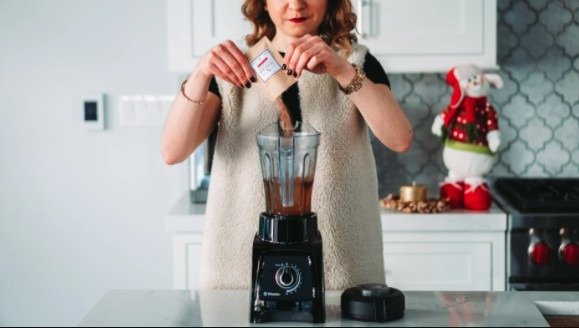A blender basically mixes, crushes, purees, or emulsifies food ingredients. But if you’re wondering whether or not a blender can also chop vegetables, well, you’ve come into the right place!
The answer is: yes, a blender can chop vegetables, but don’t expect it to chop veggies in a way like a food processor does. Here in this article, you will learn about the dos and don’ts of chopping vegetables in a blender.
How to chop vegetables using a blender?
1) Before putting certain vegetables you have into the blender (such as carrots or potatoes), you need to cut them up into about one to two-inch pieces.
2) After transferring your chopped vegetables into the blender, cover them in a generous amount of water. Make sure that the water covers the vegetables thoroughly.
3) Press the “chop” or “pulse” function on low.
4) Check your vegetables from time to time to make sure the blender has chopped them to your desired consistency.
Why put water (or any liquid) when chopping vegetables? Can you chop vegetables without any liquid?
Blenders are designed to work that way – to chop ingredients with liquid in them. Using the right amount of water or any other liquid is imperative – even crucial – to get the right texture and consistency to your ingredients.
If you use too little liquid, the result will be lumpy. But if you use too much liquid than required, the blades won’t come in contact with the vegetables, resulting in an uneven blend.
Having the right vegetables-to-liquid ratio will enable the vegetables to move around inside the blender consistently. It will allow you to chop and blend your vegetables evenly.
With a blender, you can:
- Chop hard vegetables, such as carrots and potatoes (but you need to cut them first in the sizes mentioned above).
- Chop onions (you can use the “chop” or “pulse” function on low. But be sure to cut the onion into chunks if you want to mince them in the blender).
- Chop frozen smaller fruits (and other foods cut into smaller pieces). There are certain frozen foods – such as smaller fruits or fruits that have been chopped into smaller pieces – that the blender can chop, crush, or emulsify.
What you cannot do with your blender:
- Put hot liquid – putting hot liquid in the blender is a no-no. It can even cause accidents! The steam coming will cause hot liquid to build up pressure. And when everything in the blender is pressurized, the lid will come flying off, and the hot food will explode out of the blender. It may even cause severe burns! So, don’t even just think of doing it.
- Put thick and starchy ingredients – blenders are not designed to blend thick and starchy foods. Thinking of making mashed potatoes in the blender, for instance? Forget it. It’s because the combination of the sharp blades and the blender’s speed will not give you the mashed potatoes texture that you’re looking for. Instead, it will give you a pasty finish. A potato masher or ricer will give you the desired mashed potatoes texture.
- Dough – dough is another thick and dense matter as the starchy ingredients. Dough will make it difficult for the blades to turn, and they may even get stuck. When the blades get stuck, it will force the motor to work harder than it should. When the motor gets overworked, your blender will overheat. And as the case with most appliances that experience overheating, they have the potential to explode or start an electrical fire – and so does your blender when it overheats. It’s better to knead the dough by hand or buy a stand mixer for mixing and kneading dough.
- Dried fruit – if you want to include dried fruits in your smoothie, let them soak first to soften them. This will make chopping them in the blender easier.
- Ice cubes – unless your blender is a professional-grade one, perhaps, it cannot crush whole ice cubes. They can dull or weaken the blades.
- Coffee beans and cocoa beans – you can grind coffee or cocoa beans in a blender if you use a small amount. However, a coffee grinder will do the job way much better than a blender does.
- Meat – unless you want to make something like baby food, the meat will lose the texture that you desire once it is blended.
- Certain vegetables – some vegetables, like fibrous and woodsy ones (such as raw celery, cauliflower, or broccoli) will become stringy when blended. A food processor will work better in chopping these vegetables.

